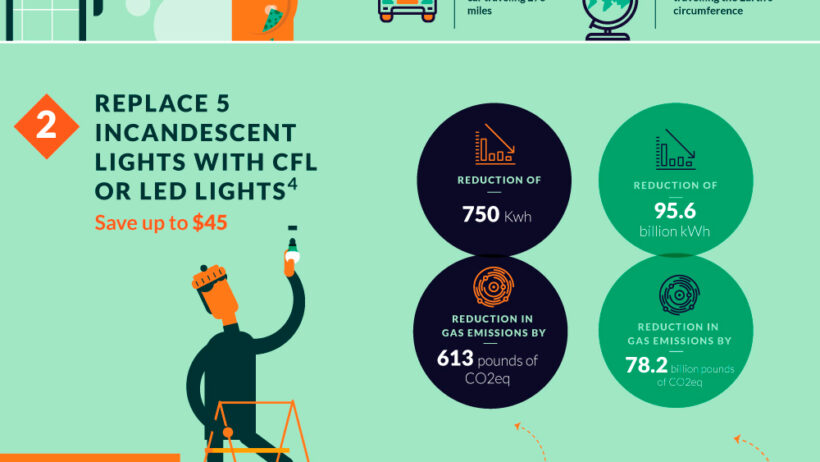Have you ever pondered how much energy your household consumes daily? What if you could turn your home into a sanctuary of efficiency while simultaneously lightening your utility bills? The challenge of conserving energy at home is not only praiseworthy but also essential for a sustainable future. Here’s a comprehensive guide on how to take meaningful steps in reducing your energy consumption.
In the quest for a more eco-friendly household, small changes can lead to significant impacts. It’s time to embark on an enlightening journey towards energy conservation.
Understanding how energy is consumed in our homes is paramount. From heating and cooling to appliances and lighting, every aspect contributes to the grand total. Let’s explore the facets of energy conservation with practical and impactful strategies.
Creating an energy-efficient home isn’t merely a task; it’s a lifestyle choice that champions sustainability. So, how do you embark on this transformative path?
Begin with the heart of your home: Heating and Cooling.
Optimizing Heating and Cooling Efficiency
Your heating and cooling systems can account for almost half of your home’s energy usage. Ensuring they operate efficiently is crucial for energy conservation. Begin by maintaining your HVAC system regularly. Schedule annual inspections to keep it in peak condition, and replace filters every few months. A well-maintained system works less hard, consuming less energy.
Another effective strategy is to invest in a programmable thermostat. This smart device allows you to set temperatures that align with your schedule. Did you know you can save up to 10% on heating and cooling costs annually by adjusting your thermostat just 7-10 degrees Fahrenheit? Imagine being comfortably warm or cool when necessary, without excessive expenditure!
Exploring alternative heating options can also be transformative. Space heaters, for instance, can provide localized warmth, while ceiling fans can enhance air circulation, reducing dependence on air conditioning. In the colder months, utilize natural sunlight to your advantage; open curtains during sunny days to absorb warmth and close them at night to retain it.
Now let’s shift to the realm of appliances.
Making Efficient Appliance Choices
Another arena where energy consumption rears its head is kitchen and household appliances. Assess the energy efficiency ratings of your appliances before making a purchase. Opt for ENERGY STAR certified products when available; they meet stringent energy efficiency guidelines set by the EPA.
However, the journey doesn’t end with merely choosing efficient appliances. Their usage also plays a critical role. Full loads in dishwashers and washing machines save water and energy. Avoid running partial loads whenever possible, and choose energy-saving modes if available.
Furthermore, consider the power consumption of your refrigerator. It constantly consumes energy, so ensure it’s stocked correctly and set at the optimal temperature—between 36-38 degrees Fahrenheit for the fridge and 0 degrees Fahrenheit for the freezer. Regularly check the door seals to prevent energy loss.
Illuminating Your Space Efficiently
Lighting is an often-overlooked component of energy consumption. Transitioning from incandescent bulbs to compact fluorescent lamps (CFLs) or light-emitting diodes (LEDs) is a foundational shift in energy conservation. On average, LEDs consume at least 75% less energy than traditional bulbs, and they last significantly longer.
Beyond the type of bulb used, consider the positioning of your light sources. Maximize natural light by trimming curtains and strategically placing mirrors to reflect light throughout your home. Another engaging idea is to install dimmer switches, allowing you to modulate brightness according to your needs, ultimately conserving energy by using less light when adequate.
But have you thought about how your habits impact your lighting choices?
Sometimes, energy conservation hinges on behavioral modifications. Make it a habit to turn off lights when exiting a room, and embrace the beauty of daylight instead of relying on artificial lighting during the day. Simple shifts in behavior yield transformative results.
Harnessing Renewable Energy
Looking forward, consider the integration of renewable energy sources. Solar panels represent a powerful investment in reducing your home’s carbon footprint. By harnessing the sun’s energy, not only can you significantly decrease reliance on fossil fuels, but you can also enjoy financial incentives such as tax credits in many regions.
However, this option requires a degree of planning and can involve upfront costs. Analyzing your long-term goals and financial implications can unveil the best path for your specific situation.
Conclusion: Embrace an Energy-Conscious Lifestyle
In finality, the journey to conserving energy at home intertwines conscious choices, efficient habits, and strategic investments. It’s a path each household can embrace. From optimizing heating and cooling systems to making deliberate appliance choices and exploring renewable energy options, myriad strategies await to be implemented. So, are you ready to take on the challenge of energy conservation? The environment—and your wallet—will thank you!
Initiate your energy-saving adventure today, and let it transform not just your home, but the world around you.








